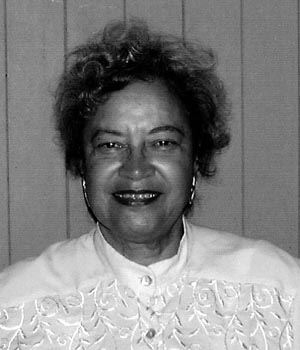 |
| http://www.cuc.claremont.edu/idbs/SojournerF2001.html |
Oppressed beneath the extent of dirt, and held in the depth of darkness, black people were not supposed to see the light of day. For centuries black people have been convinced that they are nothing, and can do nothing about it. But today African Americans have stood up tall from their bondage of slavery. They have shown themselves to be equal and respectable people. Doctors, scientists, and architects have risen from the dirt and dusted themselves off, proving themselves to society, and most importantly themselves. One such person is Norma Merrick Sklarek, the first female African American architect.
Sklarek was born on April 15, 1928 to Amy Willoughby and Dr. Walter Ernest Merrick in Harlem, New York. As a child she was taught important values. Although her father was a doctor, she grew up during the depression, so they all took part in the upkeep of the house. Her parents always told her that “things that are worthwhile and from which one receives great satisfaction are never easy but require perseverance and hard work.” Hard work is exactly what Sklarek did. She attended the best public schools, and to get into her high school, Hunter High, she had to receive a high grade on an English and Mathematic admission test. As a student, she enjoyed the arts, sciences and math.
Sklarek had a good relationship with both of her parents, but it was the quality time with her father that shaped her future career. “I did a lot of things with my father that girls normally don’t do, things like going fishing, painting the house, doing carpentry work. I think because of my father’s influence, the typical female careers did not appeal to me.” It was her father who encouraged her to consider architecture. So, with very little knowledge of what it entailed, she decided to go to school for it. Sklarek dedicated one year to Barnard College and four at Columbia University School of Architecture. “I remember my first year at Columbia. I had a hard time because everything was different from high school. I was working very hard just trying to pass the course.” Once again that hard work paid off. In 1954 she passed the seven part, four-day, thirty-six hour-long test on her first try. She received recognition from the Dean who told her that she did better than some A students who didn’t pass it their first time.
After college Sklarek struggled with the next obstacle, finding work. “There’s a difference between ten years of experience and one year of experience repeated ten times.” But Sklarek kept pushing the door open and landed a job with Skismre, Owings, & Merrill. She later became the first black female (and female director) in the Gruen and Associates firm in California. She was the first woman awarded a fellowship with the American Institute of Architects, and owned her own firm, Siegel-Sklarek-Diamond. Some of her magnificent structures are the American Embassy in Tokyo, the Fox Hills Mall in Culver City, California, the California 2.5 million-square foot international merchandising complex (the largest fashion center in the world) and the San Bernardino, California City Hall.
Only with persistence and diligence did Sklarek achieve what she did. Hard work is the key to accomplishing anything in life. “In architecture, I had absolutely no role model. I’m happy today to be a role model for others that follow.” So let all of us not be afraid of hard work, not allowing it to take hostage of our future. Instead let us use every opportunity to enrich our lives with the fruits our hands produce.
Page created on 8/28/2011 12:00:00 AM
Last edited 8/28/2011 12:00:00 AM
